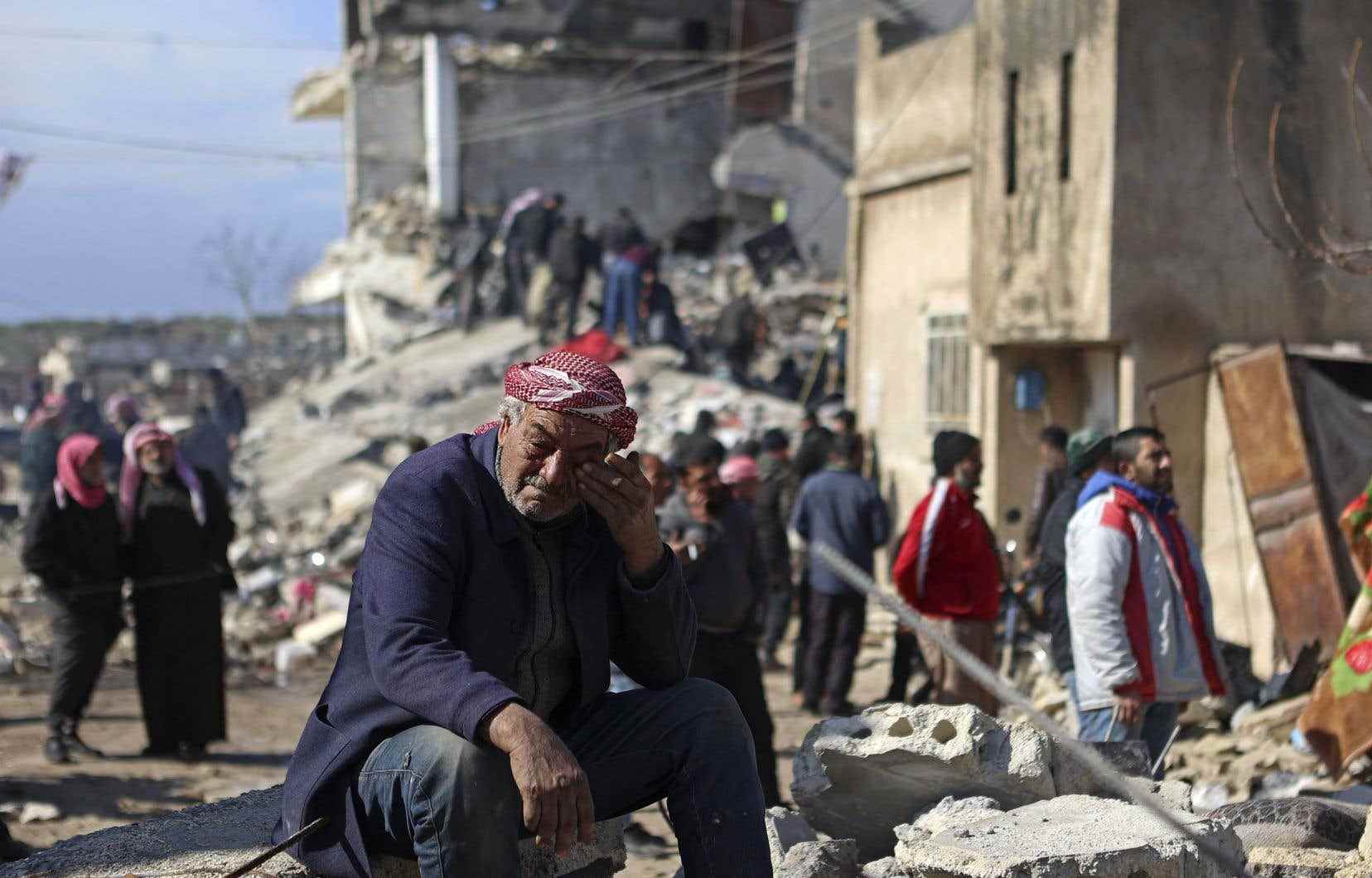The search for survivors continues on Tuesday in the aftermath of the powerful earthquake whose toll, constantly worsening, now exceeds 5,000 dead in south-eastern Turkey and northern Syria, a real race against the passing hours and the glacial cold.
Twenty-three million people are “potentially exposed, including around five million vulnerable people”, warned the World Health Organization (WHO), which has pledged its support.
International aid is due to start arriving on Tuesday for affected areas in Turkey and Syria. The first tremor early Monday, followed by several strong aftershocks, reached a magnitude of 7.8 and was felt as far away as Lebanon, Cyprus and northern Iraq.
In Turkey, the death toll currently stands at 3,419 and that of the injured at 20,534, according to Vice President Fuat Oktay.
In Syria, at least 1,602 people have died and 3,640 have been injured, according to Syrian authorities and rescue workers in rebel areas. In the government-controlled part of Syria, the death toll has risen to 812 dead and 1,449 injured, according to the health ministry.
In areas under rebel control, the White Helmets (civil defense volunteers) reported 790 dead and more than 2,200 injured.
In Jandairis, a Syrian town bordering Turkey, a living baby – a little girl – still connected by the umbilical cord to her dead mother like all the other members of the family, was pulled out of the rubble of a building.
In Hatay, a Turkish town on the Syrian border, rescuers fought hard in the cold, in the pouring rain or snow, sometimes with their bare hands, to save every life that could be saved. A seven-year-old child was extricated from the ruins under the eyes of AFP, after more than 20 hours of terror. “Where is my mom? she said to the rescuer who held her in his arms.
Ghanaian footballer Christian Atsu, a former Chelsea and Newcastle player who joined Turkish club Haytayspor in September, has been found alive in a collapsed building in Hatay, according to Ghana’s ambassador to Turkey.
The bad weather in the region complicates the rescue task and makes the fate of the survivors even more bitter, shivering in tents or around improvised braziers. Deeply bruised, the hard-to-reach region of Kahramanmaras is buried in snow.
First international aid
The first teams of foreign rescuers, from France and Qatar in particular, arrive on Tuesday. According to Turkish President Recep Tayyip Erdogan, who declared a state of emergency in the ten provinces affected by the earthquake, 45 countries offered their help.
US President Joe Biden has pledged “all the help needed, whatever it is”. Two American detachments of 79 rescuers each were preparing to go there, according to the White House.
China announced Tuesday, according to state media, the sending of aid of 5.9 million dollars, including specialized rescuers in urban areas, medical teams and emergency equipment.
In Moscow, Russians were bringing warm clothes for the earthquake victims to the Turkish embassy. “My husband’s whole family lives in Hatay,” Evgenia Oztiouk, a forty-year-old Muscovite entrepreneur married to a Turkish national, told AFP. Others brought flowers, like Alikber Tarayev, a 58-year-old lawyer who came with other Azerbaijanis living in Moscow.
In Syria, the appeal launched by the authorities in Damascus was mainly heard by its Russian ally, promising rescue teams “in the next few hours”, while according to the army, more than 300 Russian soldiers are already on the scene. to help the emergency services.
The UN also reacted, but insisted that the aid provided would go “to all Syrians throughout the territory”.
Taking advantage of the chaos, around 20 suspected fighters from the Islamic State (IS) jihadist group escaped from a military prison in Rajo, controlled by pro-Turkish rebels.
The balance sheets on both sides of the border continue to grow.
In Turkey alone, the authorities have counted nearly 5,000 collapsed buildings. And the drastic drop in temperatures puts the wounded, stuck in the ruins, at an additional risk of hypothermia.
dormitories
The WHO itself said that it expected the worst and feared “tolls eight times higher than the initial numbers”.
During the day on Monday, no less than 185 aftershocks were recorded, following the first two tremors: one of 7.8 which occurred in the middle of the night, at 04:17 local time, the other, of magnitude 7.5, at midday, both in southeastern Turkey.
Several aftershocks were recorded in the night, Tuesday before dawn. The strongest, of magnitude 5.5, was recorded at 6:13 a.m. local time nine km southeast of Gölbasi.
Dormitories have been opened by local authorities in gymnasiums or colleges or even in mosques to accommodate survivors. But for fear of new tremors, many residents preferred to spend the night outside, as in Sanliurfa, in southeastern Turkey.
“Who isn’t afraid? Everyone is afraid! “, assured Mustafa Koyuncu, 55, crammed with his wife and five children in the family car.
This earthquake is the largest in Turkey since the earthquake of August 17, 1999, which caused the death of 17,000 people, including a thousand in Istanbul. The country is in national mourning for seven days.
